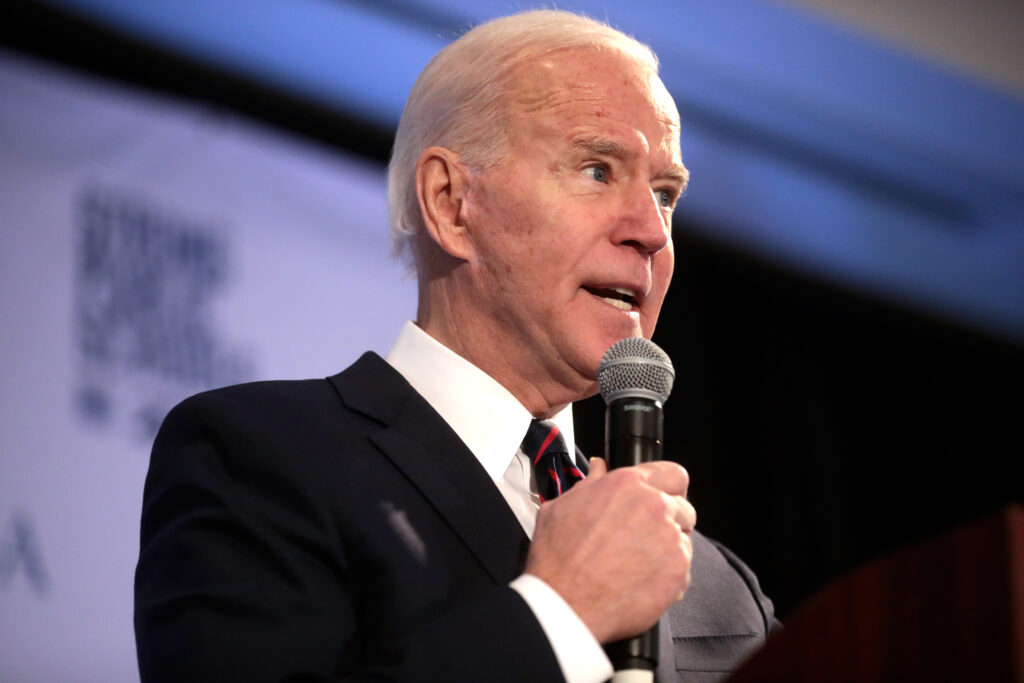Advocates of greater government control over health care had fifteen years to figure out why they failed to pass a national healthcare reform bill during President Clinton’s administration. After the Democratic Party retook control of Congress in 2006 and won the White House in 2008, liberal think tanks and advocacy groups and their media supporters began crafting a political strategy to achieve their long-sought goal.
In one sense, this effort failed. Despite spending tens of millions of dollars on advertising and activism during 2009-2010, they were unable to convince the American people that Obamacare was a good idea. Still, these activist organizations played a key role in the enactment of the most ambitious social welfare program since Lyndon Johnson’s Great Society. How they did it is a story worth understanding.
Co-opting Industry Groups
Critics pointed out the Clinton administration failed because it was blindsided by industry groups that mounted a well-funded public relations campaign against “Hillarycare” through the famous “Harry and Louise” ads and other methods. This time around, liberals pursued a different strategy: “If you can’t beat them, co-opt them.”
Liberal advocacy groups worked with industry groups, reminding them that they could benefit from healthcare legislation. They pointed out that some companies could get government subsidies to buy medical products and services, while other companies struggling with rising healthcare costs could dump their costs onto the government.
Founded in 1982 with a $40 million endowment from high-tech businessman Philippe Villers, Families USA is a group that has fought for more than a quarter century to expand the government’s role in healthcare. Ron Pollack, an attorney who cofounded the group and is now one of Washington’s top healthcare lobbyists, took a prominent role in both the Hillarycare effort and the 2009-2010 campaign.
Sensing the opportunity after the Democrats captured Congress, Pollack and Families USA in January 2007 announced the formation of the Health Coverage Coalition for the Uninsured (HCCU). It called for expanding insurance coverage, starting with children.
Millions for PR
The list of organizations in the HCCU coalition tilted heavily toward key industry players: the U.S. Chamber of Commerce, the American Hospital Association, American Medical Association, America’s Health Insurance Plans, Blue Cross and Blue Shield Association, the Catholic Health Association, Federation of American Hospitals, Healthcare Leadership Council, Johnson & Johnson, Kaiser Permanente, Pfizer Inc. and United Health Foundation were HCCU members, along with AARP, the American Public Health Association, American Academy of Family Physicians, and Families USA.
The same month that Families USA announced its industry-heavy coalition, Andy Stern, then president of the powerful Service Employees International Union (SEIU), launched the “Divided We Fail” coalition—a multimillion dollar public relations effort to promote healthcare legislation. This group also included AARP, the Business Roundtable, and the National Federation of Independent Business (NFIB).
A month later, SEIU unveiled Better Healthcare Together (BHCT), which brought together the Center for American Progress, a liberal think tank run by John Podesta, President Clinton’s former chief of staff; the Communication Workers of America (CWA), a labor union; and the League of United Latin American Citizens (LULAC) with businesses such as AT&T, General Mills, Intel, Qwest, and even Wal-Mart.
Push for Obama’s Plan
SEIU provided a huge boost to Barack Obama during the primaries when it endorsed him over Hillary Clinton in February 2008, pumping money and resources into his general election campaign. In July 2008, shortly after Obama secured the Democratic nomination, SEIU played a founding role in creating another umbrella group of liberal activist organizations called Health Care for America Now (HCAN).
HCAN pledged to spend $40 million on grassroots organizing and multimedia campaigns pushing government healthcare.
The steering committee for this organization constituted thirteen clearly left-wing activist groups: the Association of Community Organizations for Reform Now (ACORN), the American Federation of State, County, and Municipal Employees (AFSCME), Americans United for Change, Campaign for America’s Future, Center for American Progress Action Fund, Center for Community Change, MoveOn.org, National Education Association, National Women’s Law Center, Planned Parenthood Federation of America, SEIU, United Food and Commercial Workers, and USAction.
Later additions included the Children’s Defense Fund, Leadership Conference on Civil Rights, and the National Council of La Raza. Each member of the steering committee made an initial contribution of $500,000 to fund HCAN, which also received a $10 million grant from the Atlantic Philanthropies, a liberal foundation with $3.3 billion in assets in 2007.
Close Access to President
In October 2008, Obama endorsed an HCAN statement on the essential principles of a new healthcare law. After Obama won the election, HCAN took out a television ad congratulating him and reminding him of his promise to deliver health care reform.
From the get-go, SEIU’s Stern enjoyed close access to Obama. He sat with the newly sworn-in president in the presidential box during the Inauguration Day parade. In the first six months of Obama’s presidency, Stern was the administration’s top visitor, with Podesta among the top ten. So it was no surprise that Obama declared in his first speech to a joint session of Congress that “we can no longer afford to put healthcare reform on hold.”
In March 2009, Obama convened a White House Healthcare Summit to launch the effort. The president pledged to solicit opinions from across the ideological spectrum on how to reform the nation’s medical system, but while his guest list included leaders from 169 labor, industry, and policy organizations, not one represented an organization advocating a consumer-based free-market approach to healthcare.
AARP Gets a Bonanza
The big-government think tanks and advocacy groups found a key ally in AARP, the organization that lobbies for entitlement programs for those aged 50 and older. AARP describes itself as nonpartisan, but it consistently supports big government initiatives and is staunchly opposed to reforming Medicare and Social Security entitlements.
Polls showed older Americans were the group most fiercely opposed to the healthcare push, especially when it became apparent the emerging plan would be financed by hundreds of billions of dollars in Medicare cuts. Yet AARP offered its full-throated support for ObamaCare, funding ads and hosting town hall-style events. Its “Health Action Now” Web site urged visitors to sign a petition imploring the Democratic Congress to enact legislation.
AARP’s motive for supporting ObamaCare was not purely ideological. The new law is a financial bonanza for the group’s primary business—selling insurance. In 2008 AARP generated $652.7 million in revenue selling products such as Medigap supplemental Medicare insurance, which accounts for more than 60 percent of the group’s revenue, according to an analysis of its financial statements cited in the report released by the House Republican Conference.
It just so happens that Democrats stripped hundreds of billions of dollars in subsidies from Medicare Advantage, a program through which 11 million Medicare beneficiaries (or about one in four) purchase additional benefits from private insurance carriers. As a result, many seniors will find that they need to purchase policies supplementing traditional Medicare—from AARP.
Tea Parties Respond
Having corralled Obama and other Democrats into making healthcare a priority, the activist groups worked hard to prevent Democrats from deserting the cause when its lack of public support became apparent. In August 2009, when Congress adjourned for the summer, lawmakers were savaged by angry constituents who overwhelmingly opposed the legislation.
Progressive and union activists had expected to use town hall meetings to build support for healthcare. Imagine their surprise when they were upstaged by a surge of Tea Party protesters. Out-organized liberal activists hastily allied with Democrats and the media to delegitimize their town hall critics.
When members of Congress returned to Washington in September, Obama again addressed them in joint session, demanding they pass his plan. But in the following months, Democrats kept running into a stumbling block—the so-called public option. Insurance companies had no qualms about endorsing a plan under which the federal government would require all Americans to purchase private insurance and give insurers hundreds of billions of dollars in subsidies. But the insurance industry opposed having to compete against a government-run plan.
Ironically, they agreed with liberal activists in recognizing the public option was the central element of any healthcare plan that would transform American society. Anything else, many progressives argued, would just be a payoff to the insurance industry. The problem congressional leaders faced was that the inclusion of a public option lost the votes of relative moderates among the Democrats, while the more progressive Democrats threatened to oppose any bill that did not include it.
Messy Sausage Making
Eventually, Speaker Nancy Pelosi muscled a bill through the House, but Senate Majority Leader Harry Reid (D0NV) stripped the public option from the Senate bill to accommodate Sen. Joe Lieberman’s (I-CT) strong objections to it. The Senate Democrats caved, voting for a watered-down bill with no public option.
When Republican Scott Brown was elected to fill the late Ted Kennedy’s Senate seat in Massachusetts, the Democrats lost their filibuster-proof majority. With Democrats in disarray, liberal groups led a furious response to make sure the politicians didn’t get cold feet. Activists argued the Democrats lost Congress in 1994 not because they tried to pass healthcare but because they failed to do so.
In a key step, the HCAN coalition absorbed the loss of the public option. HCAN’s Richard Kirsch said, “Congress must keep going and finish reform right.” And despite the evidence from Massachusetts of a backlash against Democratic overreaching, SEIU’s Stern insisted they stay the course: “This is not the time for timidity. It is time to show the courage and strength of conviction to move this country forward and bring working families the change they need. It starts by passing health insurance reform.”
President Obama and the Democratic leadership were swayed by the activists, choosing to pursue a strategy based on the rarely used reconciliation method, similar to one Pollack had proposed. And on March 23, 2010, the Democrats achieved their dream of national healthcare.
A Path to Socialized Medicine
Although the failure to pass a public option is the liberals’ biggest disappointment, the proposal served a strategic political purpose. Instead of going after the raft of new regulations, the concept of the insurance exchange, and the mandate forcing individuals to buy insurance or be taxed, opponents were forced to focus their attacks on the public option.
Today, polls show most Americans believe the healthcare law should be repealed. In the battle for public opinion, the ad hoc opposition groups that opposed healthcare reform outhustled the liberal activists who spent years organizing their battle plan. Yet in the end, left-wing activists still helped pass a law that puts America on the pathway to socialized medicine.
Philip Klein ([email protected]) is a writer based in Washington, D.C. This report is adapted from a report that appeared in the Capital Research Center’s Foundation Watch (http://www.capitalresearch.org). Reprinted with permission.



